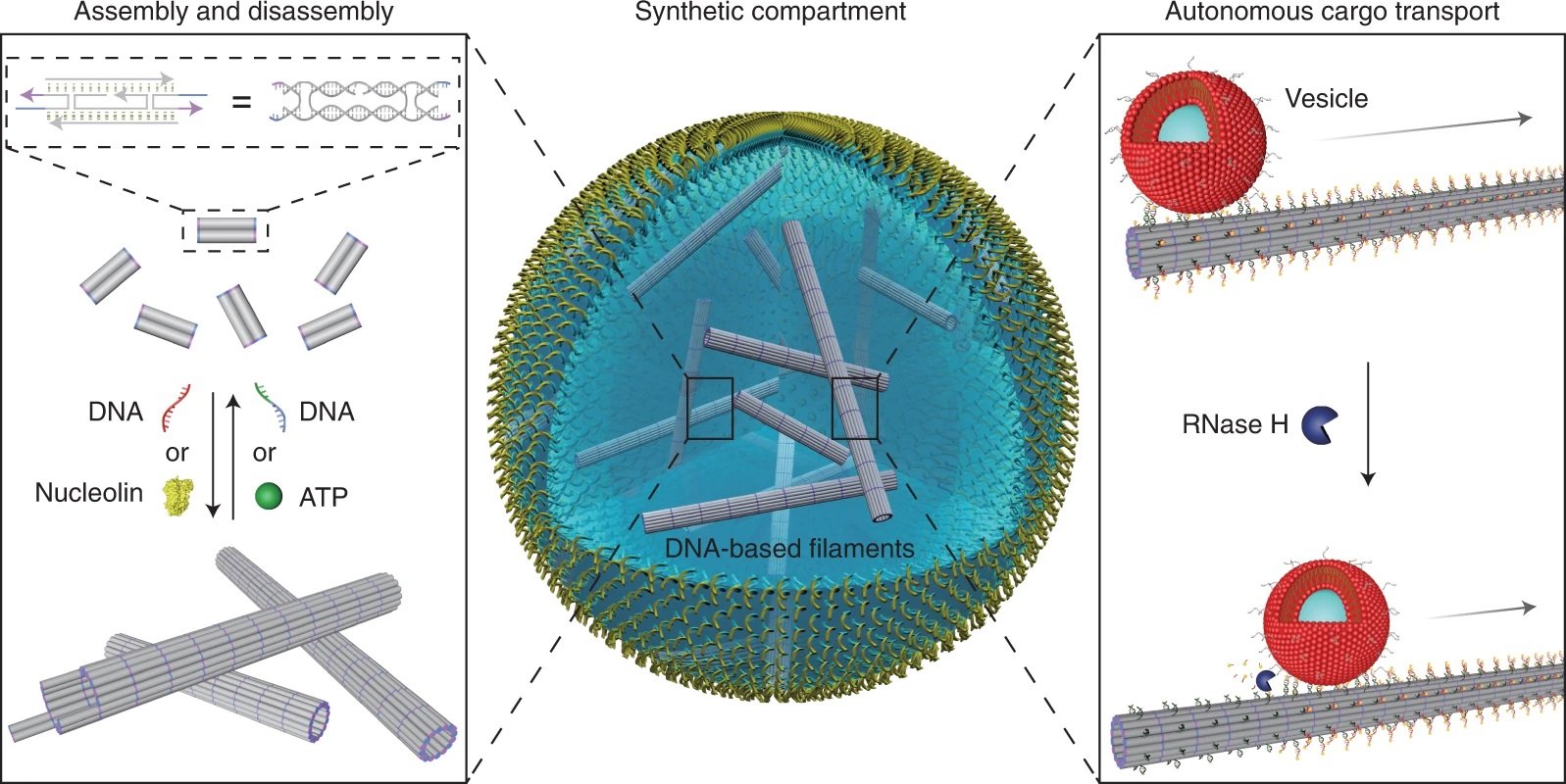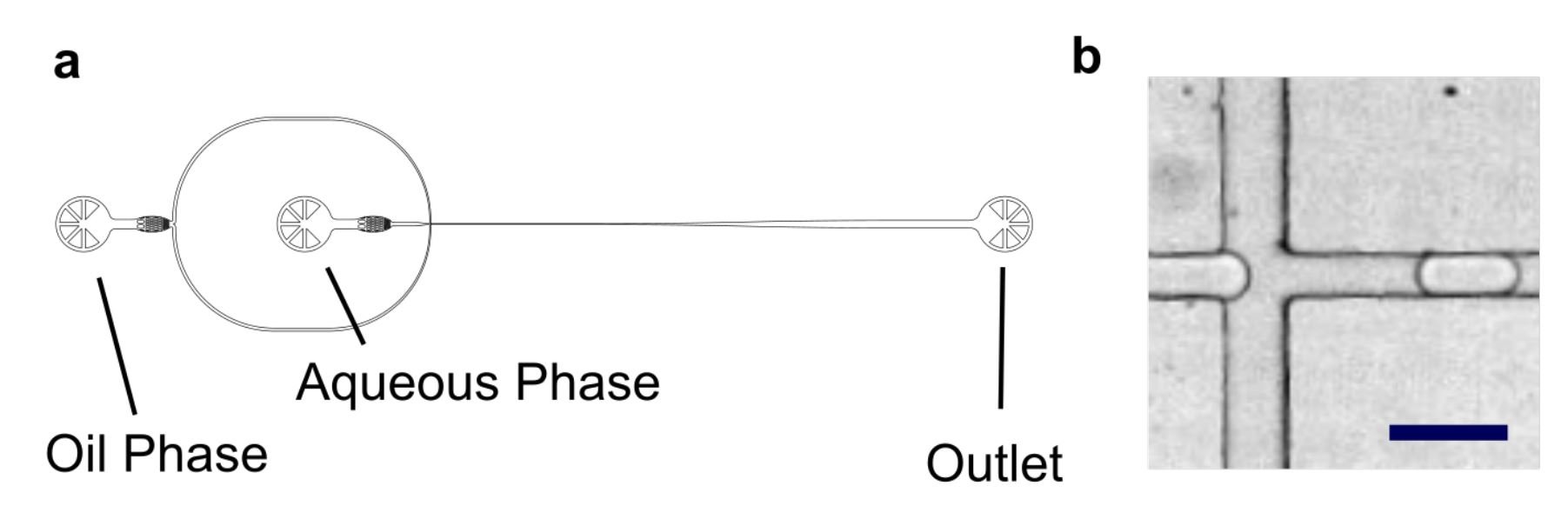
23 Jun Synthetic cytoskeletons made with DNA nanotechnology and droplet microfluidics
Abstract
“The cytoskeleton is an essential component of a cell. It controls the cell shape, establishes the internal organization, and performs vital biological functions. Building synthetic cytoskeletons that mimic key features of their natural counterparts delineates a crucial step towards synthetic cells assembled from the bottom up. To this end, DNA nanotechnology represents one of the most promising routes, given the inherent sequence specificity, addressability and programmability of DNA. Here we demonstrate functional DNA-based cytoskeletons operating in microfluidic cell-sized compartments. The synthetic cytoskeletons consist of DNA tiles self-assembled into filament networks. These filaments can be rationally designed and controlled to imitate features of natural cytoskeletons, including reversible assembly and ATP-triggered polymerization, and we also explore their potential for guided vesicle transport in cell-sized confinement. Also, they possess engineerable characteristics, including assembly and disassembly powered by DNA hybridization or aptamer–target interactions and autonomous transport of gold nanoparticles. This work underpins DNA nanotechnology as a key player in building synthetic cells.”

“Microfluidic device and droplet formation. a Layout of the microfluidic T-junction device for the encapsulation of the DNA filaments (supplied via the aqueous phase) into surfactant-stabilized water-in-oil droplets. The droplets are collected from the outlet for further imaging. The microfluidic PDMS devices (Sylgard184, Dow Corning, USA) have been fabricated according to a previously published protocol [2] (see Methods). b Bright-field high-speed camera image of a flow-focusing T-junction during the droplet formation. Scale bar: 50 µm.” Reproduced under Creative Commons Attribution 4.0 International License from Zhan, P., Jahnke, K., Liu, N. et al. Functional DNA-based cytoskeletons for synthetic cells. Nat. Chem. (2022).
Figures and the abstract are reproduced from Zhan, P., Jahnke, K., Liu, N. et al. Functional DNA-based cytoskeletons for synthetic cells. Nat. Chem. (2022). https://doi.org/10.1038/s41557-022-00945-w under Creative Commons Attribution 4.0 International License.
Read the original article: Functional DNA-based cytoskeletons for synthetic cells


